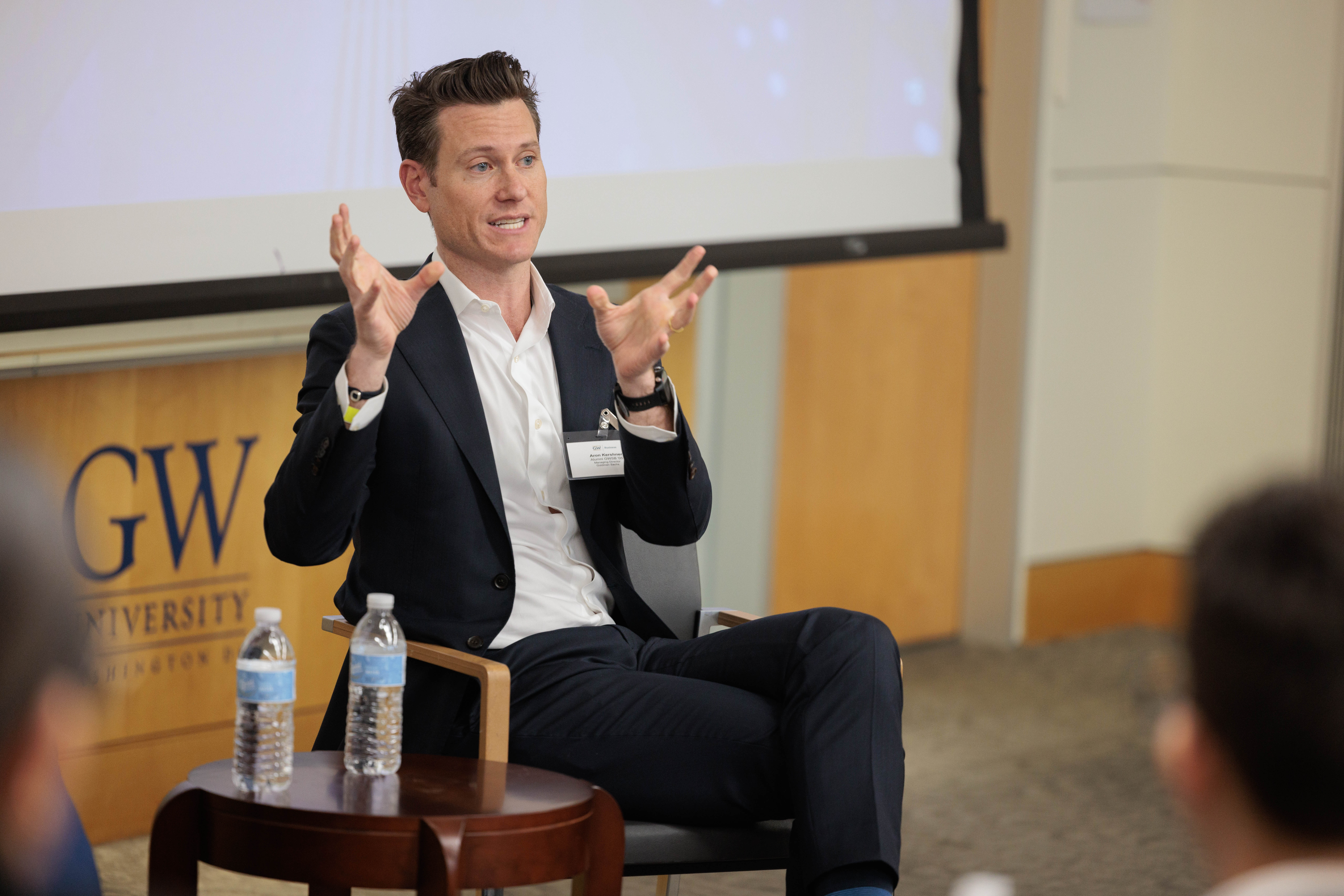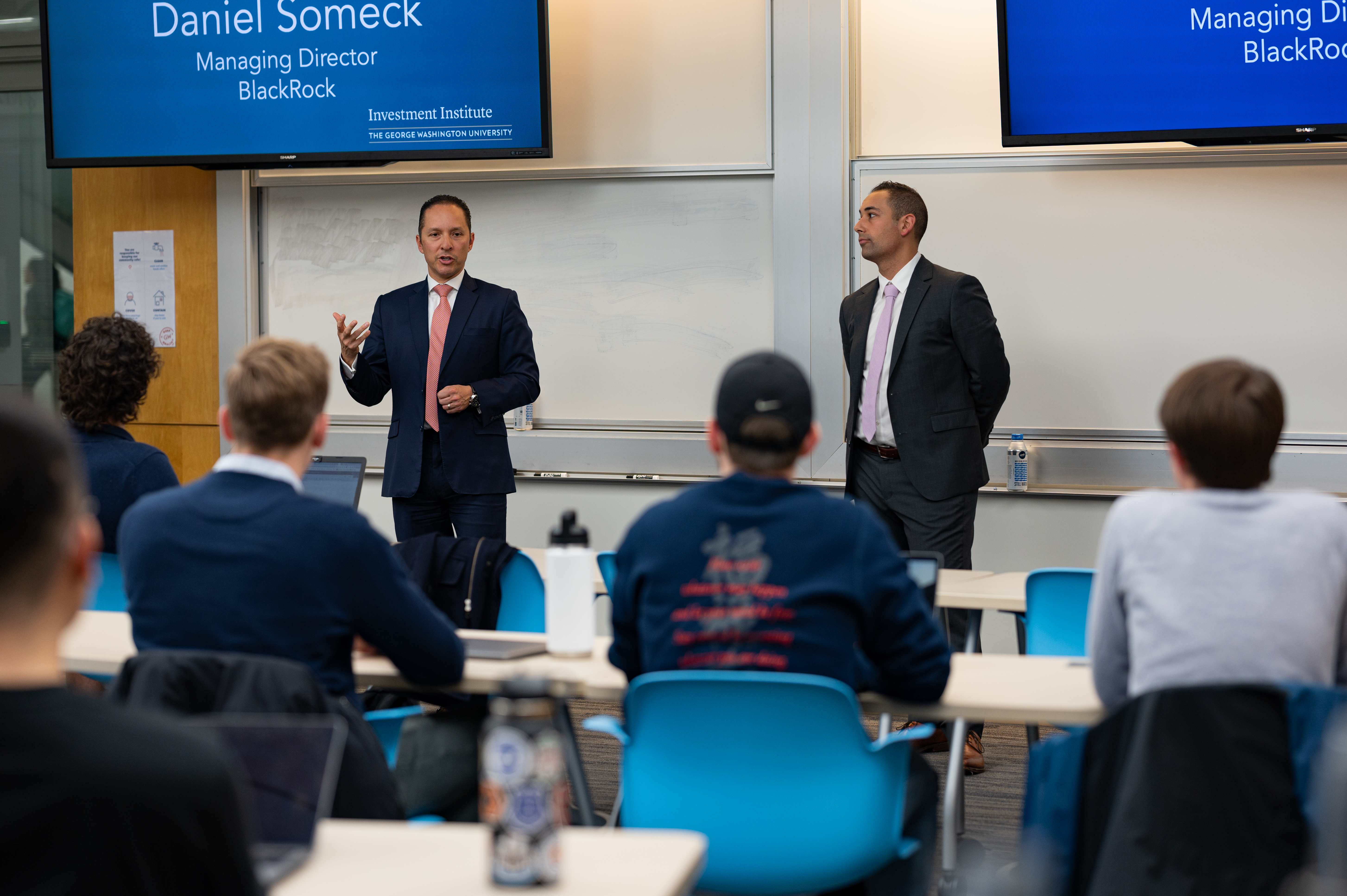When something is described as quantitative, it’s generally understood that the sample is numbers-based, countable or measurable. And that rings true for quantitative—or quant—investing, which uses algorithms to measure large sets of data and thus make trades based on those analyses.
But quant investments managers who use statistics, analytics and data to discover market trends need to be versed beyond numbers. Communication and relationship building are critical, according to George Washington University alumnus Aron Kershner, B.B.A. ’05, a managing director at Goldman Sachs and senior portfolio manager within the company’s asset management division.
His unit, the Quantitative Equity Solutions team, uses its quantitative knowledge to work with investors in building a portfolio specifically designed to meet their needs and goals. They specialize in working with high net worth, retail and institutional clients to build customized equity solutions, and being able to articulate and frame quant investing through a benefits-first approach are key components to meeting their clients’ objectives.
Kershner understands the responsibilities that come with managing people’s retirement accounts and life savings. Even if the language of quant investing is cloaked in algorithms and data, he’s found that being open with investors and understanding their goals and challenges can better lead to the most practical individual investment choices.
“Communication, and frankly overcommunication, is really important,” Kershner said.
Kershner joined Goldman Sachs in 2005, shortly after graduating from the GW School of Business studying accounting and finance. He returned to campus Friday as the keynote speaker at the GW Investment Institute’s annual quant investing conference, where he shared industry expertise to a large contingent of students in a sixth-floor lecture room at Duquès Hall.
With recent collapses of U.S. banks, particularly the Silicon Valley Bank that marked the largest since the 2007-2008 financial crisis, those students were, naturally, curious about quant investment strategies during times of turmoil. Kershner, answering questions during a moderated discussion with GW Investment Institute Director Rodney Lake, further emphasized the importance of communication and pushed against any notion that quant investing is a black and white practice.
“Quantitative investing in many ways is some of the most articulated investing out there because it has to be defined if it's formulaic, or structured or programmatic in some way,” he said. “So, quantitative investing, I think, can be very transparent.”
He’s confident in his approach because he learned as a GW student to embrace trying things and not fearing being wrong.
“You’re not always going to get things right, but being able to learn from it and take those risks is how you advance and improve, and I feel like those are definitely lessons I took from here,” he said, citing Associate Professor of Finance Arthur Wilson’s courses as particularly influential.
The influence GW has had on his life and career has made him want to give back. Kershner supported the launch of a new Quantitative Investing class in the spring 2020 and philanthropically supported GW Quant Student Investment Fund that was launched December 2021. He is a frequent guest speaker of the class he helped launch.
“I learned a lot here and wanted to bring in some perspective from the industry side,” Kershner said. “[Giving back] is something that I’ve really enjoyed.”
He is especially proud of his involvement with the Quant Student Investment Fund, noting the opportunity and real-world benefits GW students receive because of it.
Students enrolled in GW Investment Institute courses manage university endowment capital through the GW Investment Institute’s student investment funds, consisting of multiple funds across different asset classes and with more than $6.5 million of assets under management as of March 2023.
In the Quant Student Investment Fund, undergraduate students enrolled in Finance 4103 learn about quant investing strategies and work in groups on a project to build and test a predictive model. Lake teaches the course, while Kershner is its portfolio adviser.
Kershner also stressed to students the importance of surrounding themselves with people who have a diverse set of talents and interests, stating that collaboration is an important component under the communications umbrella of quant investing. With GW’s interdisciplinary approach to education, he believes students at the university bring a strong exposure to the industry that will make them not only viable candidates once they graduate, but valuable team members who can communicate their expertise to a wide audience.
“I think it just really important to draw from different talent pools,” Kershner said. “GW gets the best of some of these different backgrounds, and that’s really exciting.”



